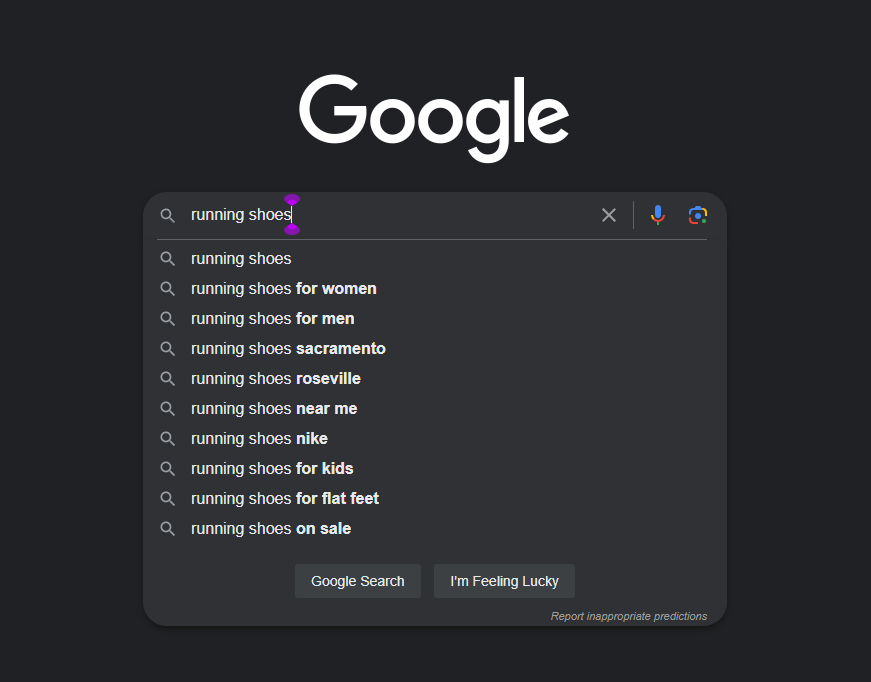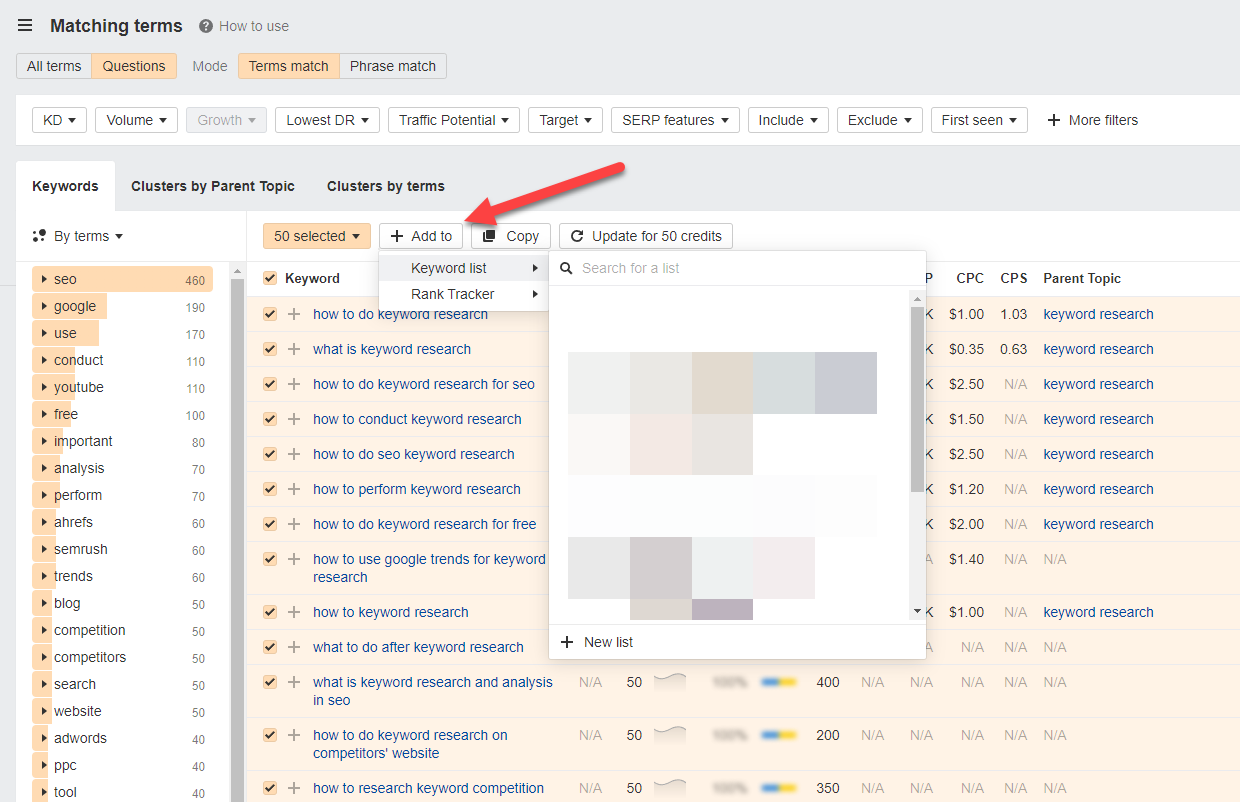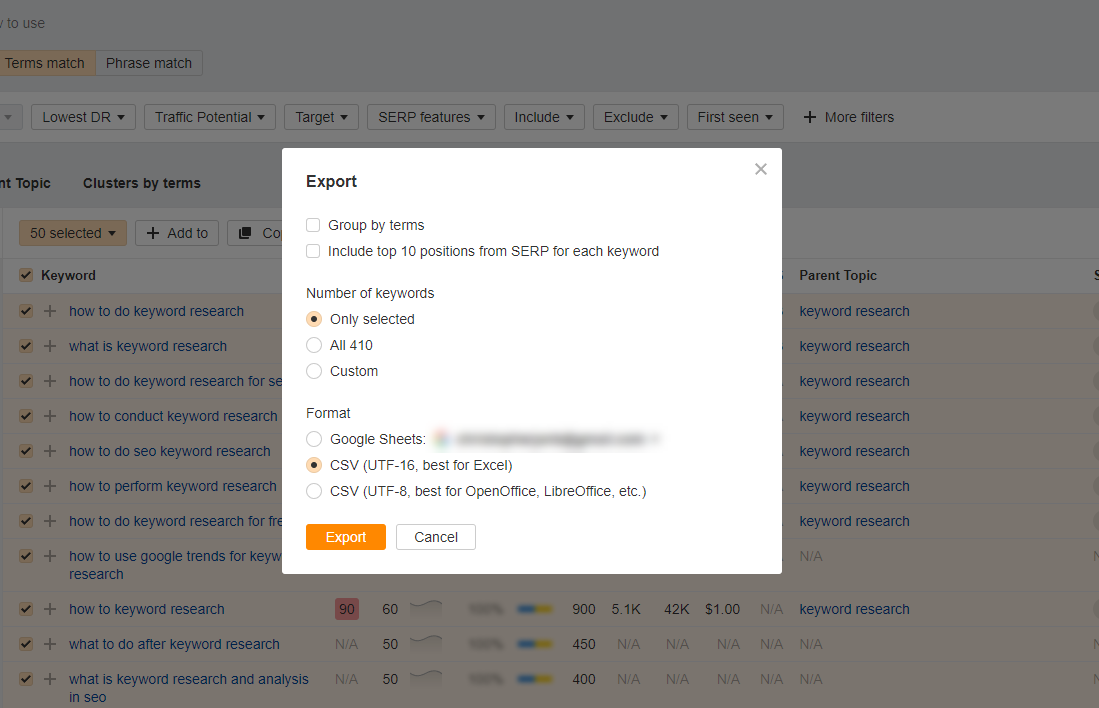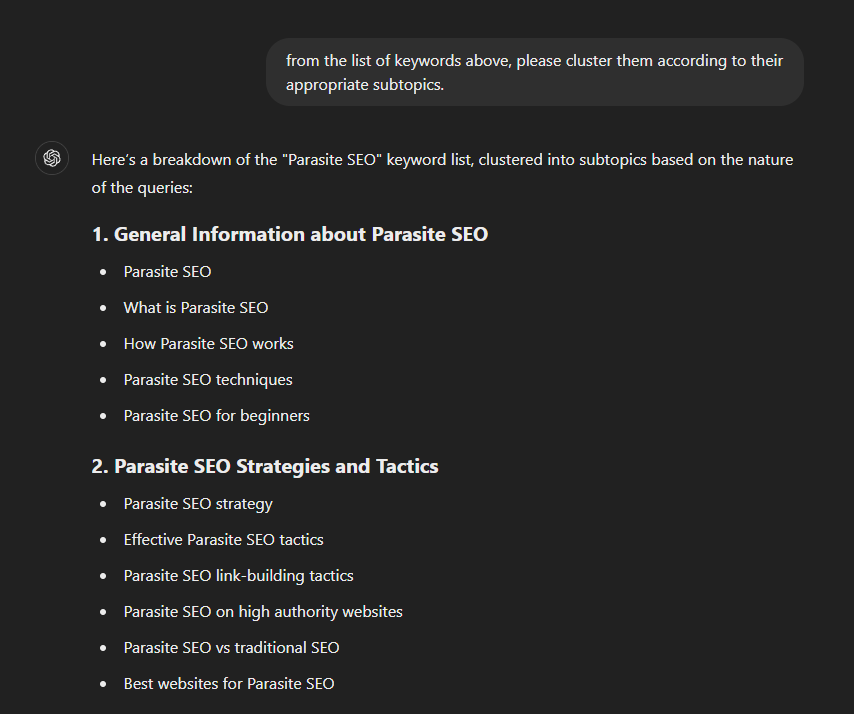Are you struggling to get your website noticed in the vast sea of online content? You're not alone. Many business owners and digital marketers find themselves lost in the complex world of SEO, watching their competitors climb the search rankings while they remain invisible.
But what if there was a way to turn the tables? A method to uncover the exact words and phrases your potential customers are using to find products and services like yours?
That's where keyword research comes in. It's the secret weapon of successful SEO strategies, and I'm about to show you how to master it. In this guide, we'll walk through a step-by-step process on how to conduct keyword research for SEO to help you attract more of the highly targeted website traffic from search engines.
Understanding Search Intent: The Key to Keyword Success
Before we address why is keyword research important and what the correct process is, it's crucial to grasp the concept of search intent. Search intent is why someone types a particular query into a search engine. It's the 'why' behind the 'what' of a search.

There are three main types of search intent:
-
Informational - Searchers are looking for knowledge. They might be trying to answer a question, learn how to do something or gather information on a topic. Queries like "how to bake a chocolate cake" or "symptoms of the flu" fall into this category.
-
Navigational - Users are searching for a specific website or page. They might type in "Facebook login" or "BBC News" rather than typing the full URL.
-
Commercial/Transactional - These are searchers ready to make a purchase or take a specific action. Queries like "buy iPhone 13 Pro" or "book hotel in London" indicate transactional intent.
Understanding and aligning your keywords with user intent is crucial for SEO success. The reason is because Google's primary goal is to provide the most relevant results for each search query. So, if your content matches the user's intent, you're more likely to rank higher on search engine results pages (SERPs) and attract the right audience.
For example, if someone searches for "best running shoes", they're likely in the research phase of their buying journey. They're looking for informational content that compares different options. On the other hand, a search for "buy Nike Air Zoom Pegasus" indicates a user who's ready to make a purchase.
The Keyword Research Process: Your Roadmap to SEO Success
Now that we understand the importance of search intent let's dive into the keyword research process itself. This step-by-step approach will help you uncover the most valuable keywords for your business.
#1 - Brainstorming Seed Keywords
The first step in any keyword research journey is to brainstorm seed keywords. These are the core topics related to your business or niche. To generate seed keywords, start with your products or services and think about the words you would use to describe them.
Consider your customer's pain points and what problems you solve. Include industry jargon and common terms in your field, and look at your website's main categories or menu items.
For instance, if you run a fitness equipment store, your seed keywords might include "home gym equipment", "weightlifting gear", or "cardio machines".
Customer feedback, frequently asked questions, and common queries from your support team can also be goldmines for seed keywords. These real-world interactions often reveal the exact language your audience uses when thinking about your products or services.
#2 - Using Keyword Research Tools
Once you have your seed keywords, it's time to expand your list using keyword research tools. These tools provide valuable data on search volume, competition, and related keywords.
Some popular options include Google Keyword Planner, which is a free tool offering search volume and competition data ( you need a working Google Ads account to use this); Ahrefs, a comprehensive SEO toolkit with excellent keyword research features; SEMrush, another powerful all-in-one SEO tool with robust keyword capabilities; and Ubersuggest, a user-friendly tool offering keyword ideas and basic metrics.

To use these tools effectively, enter your seed keywords into the tool of your choice. Semrush has the Keyword Magic Tool where you receive tons of suggestions from the topic or keyword you entered along with metrics to help you decide which keyword phrases to go with in your campaign.

Speaking of which...
#3 - Analysing Keyword Metrics
As you explore potential keywords, you'll encounter various metrics. Understanding these can help you prioritise your keyword targets.

Depending on the keyword research tool you're using, you will see a variety of metrics to help you decide which search queries to optimise or your site. Below are the most popular ones:
-
Search volume indicates how often a keyword is searched for in a given period. Higher volume can mean more potential traffic, but also more competition.
-
Keyword difficulty (KD) estimates how hard it would be to rank for a particular keyword. It's usually based on the authority and content quality of the top-ranking pages.
-
While primarily used for paid campaigns, cost per click (CPC) can indicate a keyword's commercial value. A higher CPC often suggests higher conversion potential.
When you look over these metrics from your initial search, you can look for a balance. Keywords with high search volume and low difficulty can be great opportunities. However, don't ignore low-volume keywords if they're highly relevant to your niche– they can often lead to more qualified traffic.
#4 - Finding Long-Tail Keywords
Long-tail keywords are more specific and usually longer phrases that searchers use when they're closer to the point of purchase or using voice search. These keywords typically have lower search volume but often boast higher conversion rates because they're more specific to what the user is looking for.

To find long-tail keywords, look at the 'Searches related to' section at the bottom of Google's search results page.

You can also use tools like Answer the Public, which generates questions and phrases based on your seed keywords.

Another effective method is to use Google's autocomplete feature. Type in your main keyword and see what suggestions pop up.

For example, if your seed keyword is "running shoes", long-tail variations might include "best running shoes for flat feet" or "lightweight running shoes for marathon training". These phrases are more specific and likely to attract users with clear intent, potentially leading to higher conversion rates.
#5 - Identifying Low-Hanging Opportunities
In the world of SEO, low-hanging opportunities are keywords that offer a good balance of search volume and low competition. These are often overlooked by your competitors and can provide quick wins for your SEO strategy.
To find these opportunities, look for keywords with decent search volume (this will vary depending on your niche) but low keyword difficulty scores in your chosen SEO tool. Pay attention to keywords where the top-ranking pages have low domain authority or where the content isn't particularly comprehensive or high-quality.
You can filter these results on Ahrefs to make the process much easier for you. Make the tool show keywords with a KD 10 max and at least 100 search volume.

However, don't ignore keywords with lower search volumes, especially if they're highly relevant to your business. A keyword below 100 monthly searches might seem low, but if it's highly targeted and you can convert a good percentage of that traffic, it could be very valuable for your business.
#6 - Competitor Analysis
Analysing your competitors' keyword strategies can provide valuable insights and uncover opportunities you might have missed. Start by identifying your main competitors – these could be businesses you compete with directly, or websites that consistently rank for your target keywords.
Ahrefs shows you what your site's top competitors are if you run your domain URL in the Site Explorer.

From here, use the tool's Competitive Analysis gap to determine keywords your competitors are ranking for, but your site isn't. Enter the competitor URLs in the text bar (maximum of 5 URLs) and your site's URL before proceeding.

The tool shows you keywords that they have pages for, how high they're ranking on SERPs for these terms, and additional keyword data. These help you determine which keywords to target on your next content campaign.
For example, if competitors are all ranking for a keyword but are outside the first page of Google search, take this opportunity to create content that's better than the others and optimise for this search query. Also, please make sure that the keyword has low competition and high search volume to maximize your chances of ranking for the term on Google and generate the most traffic.
#7 - Building a Keyword List
Once you've gathered a substantial list of keywords through your research, it's time to organise them effectively. This step is crucial for turning your keyword research into an actionable SEO strategy.
Start by categorising your keywords based on relevance and priority. Group keywords that are closely related or target the same topic. You can save the keywod lists on Ahrefs. This will help you identify content clusters – groups of related content that can interlink and support each other, boosting your overall SEO performance.

Consider creating a spreadsheet or using a keyword management tool to keep track of your keywords. Include columns for the keyword, search volume, difficulty, intent, and any other metrics you find valuable. This will allow you to sort and filter your keywords easily, helping you prioritise your content creation efforts.
This can easily be done using the keyword tool's export feature.

As you organise your keywords, think about how they align with different customer journey stages. Some keywords might be more appropriate for top-of-funnel content aimed at attracting new visitors, while others might be better suited for bottom-of-funnel content targeting users ready to purchase.
#8 - Tracking and Updating Your Keywords
Once you have a keyword list, set up a system for tracking your keyword rankings over time. Many SEO tools offer rank tracking features that allow you to monitor how your website is performing for your target keywords. Regularly review this data to identify trends and areas for improvement.
Pay attention to fluctuations in your rankings. If you notice certain keywords dropping in rank, it might be time to refresh your content or reconsider your strategy for those terms. Conversely, keywords that are improving in rank might present opportunities for further optimisation to push them even higher.
Also, keep an eye on changes in search volume and competition for your target keywords. A keyword that was once low-competition might become more competitive over time, or a new trend might cause search volumes to spike for certain terms. Being aware of these changes allows you to adapt your strategy accordingly.
Finally, remember to continually expand your keyword list. Set aside time regularly to research new keywords, especially as you add new products or services to your business. Stay informed about industry trends and new terminology that might be relevant to your audience.
AI in Keyword Research: The Future of SEO
As we look to the future of SEO, it's clear that artificial intelligence (AI) is set to play an increasingly important role in keyword research and strategy.
AI-powered tools like ChatGPT are already being used to generate keyword ideas and content outlines. These tools can analyse vast amounts of data and identify patterns that humans might miss, potentially uncovering valuable keyword opportunities.
You can even use it to generate relevant keywords from your seed keyword.

While it won't provide you with SEO metrics, at the very least, you can use ChatGPT as part of the keyword tools in your arsenal to speed up the process.
AI is also improving the way we understand search intent. Natural language processing algorithms are becoming increasingly sophisticated at interpreting the nuances of human language, helping to bridge the gap between the keywords people use and their underlying intent.
Going back to ChatGPT, you can ask not only for a list of keyword ideas from your topic, but also identify the user intent of each, potential page titles for each keyword, and a content outline!

Tools like Topical Map AI are revolutionising the way we approach content planning. By analysing the relationships between different topics and keywords, these tools can help you create more comprehensive, authoritative content that covers all aspects of a topic.

However, it's important to remember that while AI can be a powerful tool in your keyword research arsenal, it should only replace human insight partially. The most effective keyword strategies will likely combine the data-crunching power of AI with the nuanced understanding and creativity that only humans can provide.
Conclusion: Empowering Your SEO Strategy with Expert Guidance
As we've explored in this guide, keyword research is a complex process requiring creativity, analytical thinking, and strategic planning. While we've covered the right approach and tools to dramatically improve your website's visibility and drive meaningful results for your business, we haven't discussed more advanced ways of conducting keyword research like using Google Search Console, optimising existing keywords your site is ranking for, and more.
The good thing is that you don't have to navigate this journey alone. At Charles Floate Training, we specialise in empowering businesses and individuals with the knowledge and skills they need to excel in SEO. Our comprehensive courses and personalised consultations can help you take your keyword research and overall SEO strategy to the next level.
Let Charles Floate Training be your partner in mastering the art and science of keyword research. Get in touch with us today and let's work together to create a keyword strategy that doesn't just attract traffic, but drives real, measurable results for your business.

